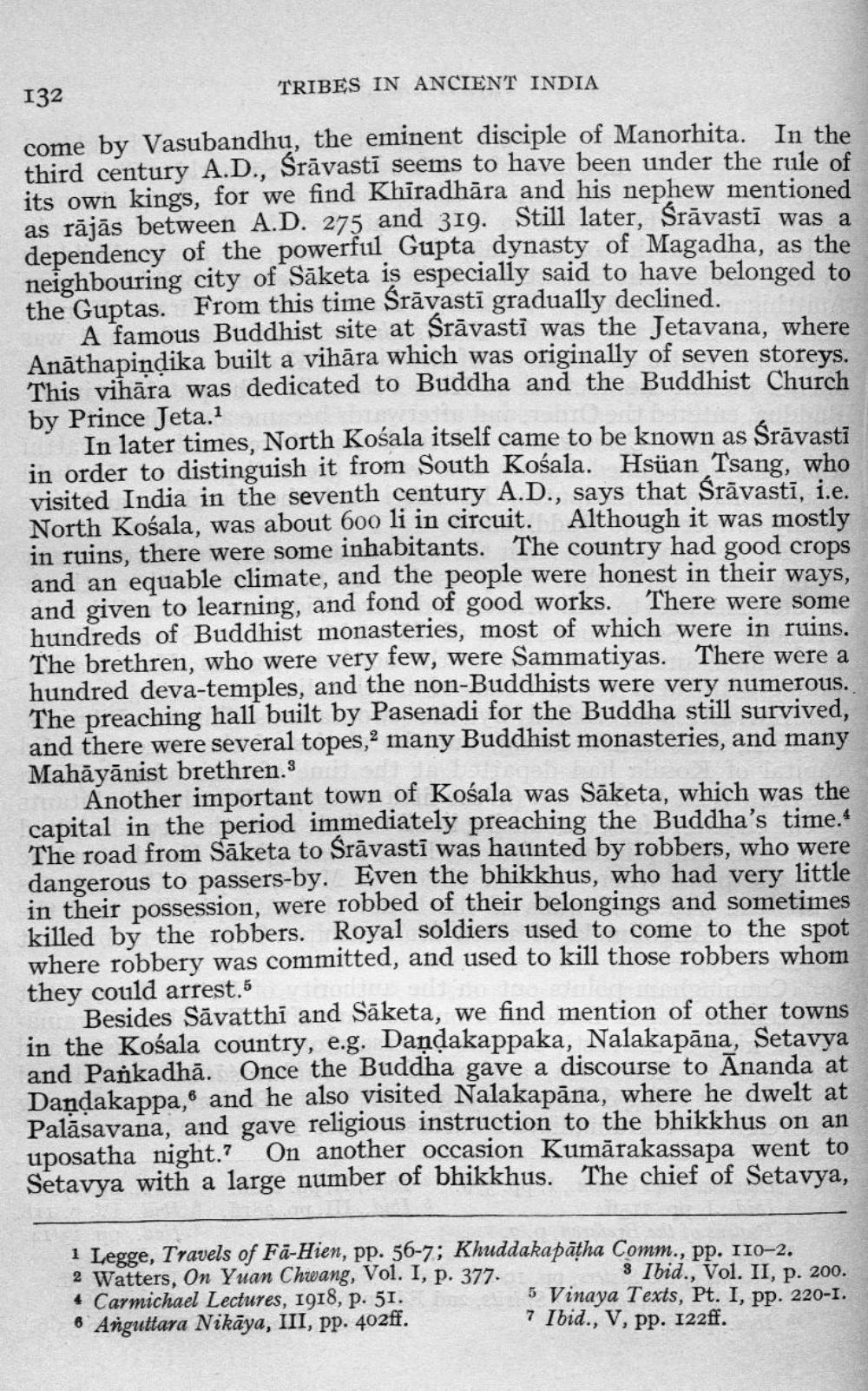________________
132
TRIBES IN ANCIENT INDIA
come by Vasubandhu, the eminent disciple of Manorhita. In the third century A.D., Srāvastī seems to have been under the rule of its own kings, for we find Khīradhāra and his nephew mentioned as rājās between A.D. 275 and 319. Still later, Srāvastī was a dependency of the powerful Gupta dynasty of Magadha, as the neighbouring city of Sāketa is especially said to have belonged to the Guptas. From this time Srāvasti gradually declined.
A famous Buddhist site at Srāvasti was the Jetavana, where Anāthapindika built a vihāra which was originally of seven storeys. This vihāra was dedicated to Buddha and the Buddhist Church by Prince Jeta.1
In later times, North Kośala itself came to be known as Śrāvasti in order to distinguish it from South Kośala. Hsüan Tsang, who visited India in the seventh century A.D., says that Srāvastī, i.e. North Kośala, was about 600 li in circuit. Although it was mostly in ruins, there were some inhabitants. The country had good crops and an equable climate, and the people were honest in their ways, and given to learning, and fond of good works. There were some hundreds of Buddhist monasteries, most of which were in ruins. The brethren, who were very few, were Sammatiyas. There were a hundred deva-temples, and the non-Buddhists were very numerous. The preaching hall built by Pasenadi for the Buddha still survived, and there were several topes, many Buddhist monasteries, and many Mahāyānist brethren.9
Another important town of Kośala was Sāketa, which was the capital in the period immediately preaching the Buddha's time. The road from Sāketa to Srāvastī was haunted by robbers, who were dangerous to passers-by. Even the bhikkhus, who had very little in their possession, were robbed of their belongings and sometimes killed by the robbers. Royal soldiers used to come to the spot where robbery was committed, and used to kill those robbers whom they could arrest.5
Besides Sāvatthi and Sāketa, we find mention of other towns in the Košala country, e.g. Daņdakappaka, Nalakapāna, Setavya and Pankadhā. Once the Buddha gave a discourse to Ananda at Dandakappa,& and he also visited Nalakapāna, where he dwelt at Paläsavana, and gave religious instruction to the bhikkhus on an uposatha night.? On another occasion Kumārakassapa went to Setavya with a large number of bhikkhus. The chief of Setavya,
1 Legge, Travels of Fa-Hien, pp. 56-7; Khuddakapātha Comm., pp. 110-2. 2 Watters, On Yuan Chwang, Vol. I, p. 377.
3 Ibid., Vol. II, p. 200. Carmichael Lectures, 1918, p. 51.
5 Vinaya Texts, Pt. I, pp. 220-I. 6 Anguttara Nikāya, III, pp. 402ff.
7 Ibid., V, pp. 122ff.




